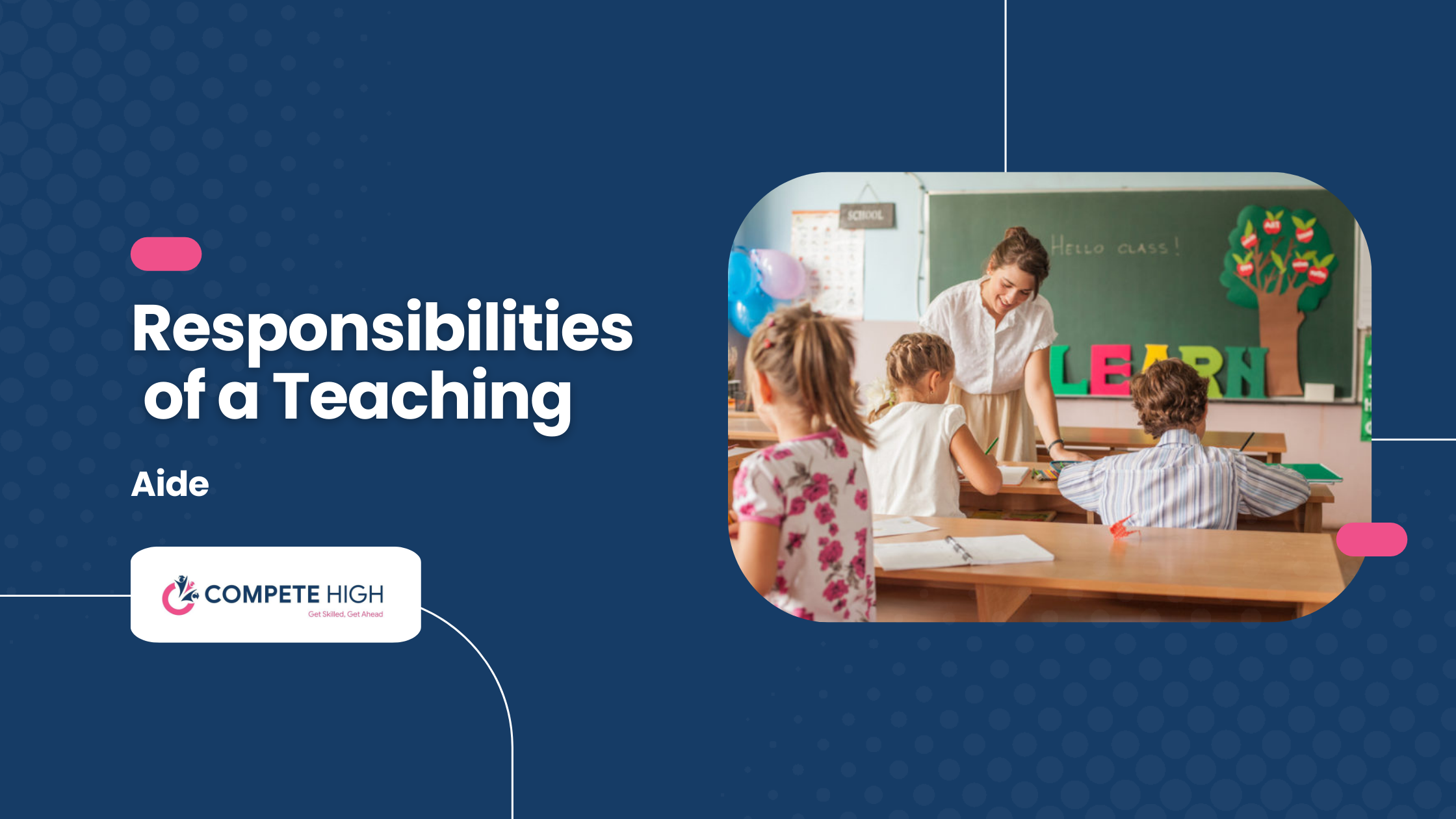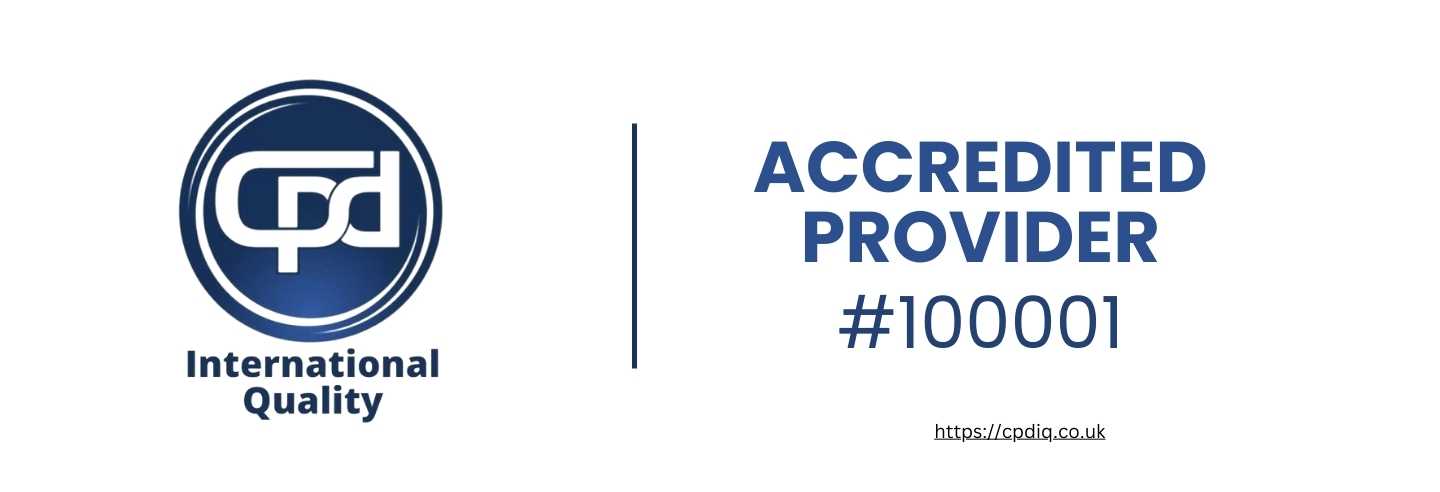
Responsibilities of a teaching aide is one of the educational system’s most important and integral parts. They provide support to teachers and students, maintain an organised and systematic environment in classrooms, and assist in delivering lessons. Moreover, they offer individual support to students. This blog aims to provide information about the important role and responsibilities of a teaching aide in the classroom and describe their responsibilities and contributions.
Responsibilities of a teaching aide is to help maintain a systematic and organised environment in classrooms and contribute to delivering lessons. They are responsible for managing the brightness of the classrooms, controlling noise levels, and assisting the teacher. They also help students by explaining concepts, describing subjects, and answering their queries. Responsibilities of a teaching aide include providing individual support to students by helping them understand concepts, assisting during laboratory experiments, and answering their questions.
Quick Overview
Teaching aides are vital to the education system, offering essential support to teachers and students alike. This blog highlights their role in classroom management, lesson delivery, individual student support, and school organisation.
Key Contributions:
✅ Assisting with lessons and behaviour management
✅ Supporting students with special needs and learning difficulties
✅ Handling administrative tasks like record-keeping and communication
✅ Promoting student engagement and emotional well-being
✅ Contributing to a positive and inclusive school environment
✅ Engaging in ongoing professional development
Teaching aides truly are the backbone of classroom support, ensuring every student receives the attention they need to succeed.
Responsibilities of a teaching aide means to contribute to establishing a positive classroom environment and assist teachers and students in achieving their goals. They maintain an organised environment, help deliver lessons, and provide individual student support. Overall, the responsibilities of a teaching aides play a crucial role in achieving educational goals and contribute significantly to the educational system.
Overview of a Teaching Aide Role
The importance and responsibilities of a teaching aide in creating a good learning experience cannot be overstated. Responsibilities of a teaching aides (also known as teacher’s aides, paraprofessionals, or teacher assistants) are vital members of the educational community who provide invaluable support to teachers, enabling them to perform their work more effectively. Unlike teachers, who design and teach the curriculum, teaching aides are assigned to support these efforts so that students can learn more efficiently.
While a teacher devises lesson plans, gives instruction, and monitors students’ progress, a teaching aide manages the day-to-day activities of the classroom. This allows teachers to be freed from time-consuming administrative and supervisory tasks and to devote more time to teaching. Although the roles of teachers and teaching aides are distinct, the work and responsibilities of a teaching aide is an important part of the teacher’s role.
Teaching aides are essential for learning. They provide extra academic support for students, organise classroom equipment and materials, and help maintain a conducive learning atmosphere. Their role in the classroom is crucial for ensuring that learning occurs smoothly and efficiently.
Teaching Aides' Role in Supporting Education
One of the most important tasks and responsibilities of a teaching aide in the classroom is to provide overall support. This support manifests in many ways, helping to make the learning environment as well-ordered and productive as possible.
Assisting with Classroom Management
Discipline and order are vital in the classroom to create a good learning environment for students. The most effective way to achieve this is through the cooperation of teaching aides. Specifically, the responsibilities of a teaching aides means to help teachers conserve their efforts by enforcing classroom rules, managing student behaviour, and keeping the classroom orderly.
For instance, the responsibilities of a teaching aide include assisting the teacher in monitoring every student’s activities in the classroom. This allows teachers to focus on teaching materials without worrying about sudden interruptions. Consequently, students can concentrate on their studies, knowing their behaviour is being monitored, thus preventing any disruptions.
Many teachers would agree that the assistance of teaching aides is crucial to the educational process.
Supporting Lesson Delivery
Closely related is the need for teaching aides to support lesson delivery by preparing materials and resources. This can involve creating handouts, visual aids, and sometimes even instructional materials developed by the teacher. Moreover, a teaching aide is often required to help students understand the content of a lesson by explaining concepts, answering questions, and providing additional explanations when necessary.
Supervising Students
Supervising students is a significant part of a teaching aide’s daily routine. This involves monitoring student behaviour and work, ensuring students are on task and completing their assignments. It can include working one-on-one with individual students who need help, whether that means completing an assignment or understanding a difficult concept. When there is a gap between struggling students and the curriculum, the responsibilities of a teaching aide means to provide the individual attention needed to bridge that gap.
Administrative Duties of Teaching Aide
The responsibilities of a teaching aide is to assist the teacher in the classroom and perform many administrative tasks vital to the operation of a school. While this work may be more behind the scenes, it greatly influences the efficiency and quality of the educational process.
Managing Classroom Materials
Teaching aides are responsible for organising and keeping classroom supplies and equipment tidy and ready for use. Ensuring that everything needed for the lesson is available and functioning can significantly aid teachers and prevent disruptions during lessons. Teaching aides also keep inventories of supplies and restock them when necessary.
Record-Keeping
A key responsibility of teaching aides is accurate record-keeping. This includes maintaining attendance records, recording grades, and tracking student progress. Such numerical data is crucial for teachers to assess performance, monitor progress, and plan future lessons, ensuring that all students receive proper guidance, attention, and encouragement based on their needs and achievements.
Communication
Effective communication is essential for good teaching, and teaching aides play a key role in this. They liaise with teachers and other school staff to ensure everyone is informed about classroom activities and student needs. Teaching aides often communicate with parents and guardians, providing updates about what their children have been learning and what the classroom needs are. This liaison between the school and home helps to create a supportive community for students in their home environment.
Teaching Aide Enhancing Student Support
Teaching aides provide students with extra support, ensuring that each child receives more attention and has a better chance to progress with their work and complete their assignments. They are essential in several aspects of student support.
Providing Individualised Assistance
The primary role of the teaching aide is to provide individualised support to pupils. For students with special needs, this support is crucial as they require additional help to keep up with their classmates. Teaching aides focus on these students, offering tailored assistance, explaining tasks in different ways if necessary, and, most importantly, keeping them encouraged and motivated.
Helping Students with Special Needs
Teaching assistants might be specifically trained to assist students with special needs or to support special education teachers in implementing individualised education plans (IEPs) and providing necessary accommodations. This may involve helping with physical tasks, such as assisting with bathroom use, carrying books, and navigating to classes. They may also aid students in communicating their needs to teachers and classmates. Some teaching assistants are trained in specialised techniques to help students achieve their learning goals.
Offering Academic Support to Struggling Students
Teaching aides also provide academic support to students who need extra help. This can involve one-to-one tutoring, assisting with homework, or engaging in additional activities to reinforce challenging concepts. By filling gaps in learning, building confidence, and improving performance, teaching aides play a crucial role in supporting academic success.
Promoting Student Engagement
Engagement is vital for effective learning, and teaching aides significantly contribute to this by encouraging students to participate in activities, ask questions, and share their ideas. This support helps students feel more comfortable and motivated to learn.
Supporting Social and Emotional Development
In addition to academic support, teaching aides assist with students' social and emotional development. They help students navigate social interactions, develop interpersonal skills, and manage their emotions. This support is particularly valuable for young students as they learn social norms and handle interpersonal relationships. Teaching aides can also be a trusted adult for students to confide in about personal matters.
Assisting with Assessments
Teaching aides help with proctoring tests and quizzes to ensure smooth assessments. They set up the space, distribute papers, and explain directions. They may also assist with writing feedback or grading, enabling teachers to quickly assess student performance. This support helps teachers identify students' strengths and areas needing improvement, allowing for more effective lesson planning.
Professional Development of Teaching Aide
For teaching aides, professional development is crucial. It is essential not only for their personal growth but also for the wider educational community. Without continual learning, teaching aides would struggle to effectively support children and young people. There are several reasons why this ongoing development is necessary.
Firstly, teaching aides must keep learning to remain effective in their roles. Without acquiring new skills, they may struggle to understand the concepts discussed by teachers or provide professional support to students. Continuous learning ensures they can perform their jobs better.
Secondly, many teaching aides are women with only elementary school education. If they do not continue their education, they may find it challenging to assist their own children with academic questions. For example, if a child asks a question that the parent cannot answer, the child might turn to another adult for help, which can undermine the parent’s role.
Thirdly, many children and young people come from challenging backgrounds. For instance, if a teenage girl becomes pregnant or a teenage boy faces similar issues, they might need guidance on how to handle their situation. A teaching aide who is committed to ongoing learning can provide valuable support and advice, serving as a reliable source of help during difficult times.
In conclusion, it is vital for teaching aides to continue their education. Without this commitment, they would be less equipped to support children and young people effectively.
Continuing Education
To keep up with current educational trends and theories, teaching aides might engage in further education through workshops and training sessions. These opportunities allow teaching aides to learn new methods and strategies for supporting pupils.
Attending Workshops and Training Sessions
Workshops and training sessions offer teaching aides a range of new ideas, materials, and methods. By participating in these sessions, teaching aides can learn about the latest techniques in behaviour management, communication, and educational technology.
Pursuing Certifications Relevant to the Role
Since teaching aides are generally tasked with supporting students, many seek certifications relevant to their role. These certifications can provide specialised skills and knowledge that enhance their ability to assist students effectively. For example, a teaching aide who earns a certification in special education is likely to be better equipped to support students with disabilities. This demonstrates a commitment to going beyond basic training to offer superior support.
Collaborating with Educators
Working with other teachers, classroom aides, and educational personnel is another way for teaching aides to develop professionally. By attending staff meetings and contributing their own approaches and strategies, teaching aides can become integral members of a cohesive educational team. This collaboration strengthens their impact on students’ learning and fosters a more unified approach to education.
Staying Updated on Educational Trends
Education is constantly evolving, with new teaching styles, technologies, and policies emerging each year. Teaching aides must stay informed about these trends to apply the most effective and contemporary methods in their work. Keeping up-to-date with the latest information enables teaching aides to provide the best possible support to students.
Challenges Faced by Teaching Aides
Teaching aides play a fundamental role in ensuring the smooth running of classrooms. However, they often face complex and demanding challenges. To be successful, teaching aides must be flexible, patient, and meticulous in understanding students’ needs. They should be present in every classroom, acting as crucial support for teachers.
Teaching aides assist with various tasks, such as preparing lesson materials, monitoring student activities, checking homework, and managing student behaviour. They can even step in to replace a teacher when needed. For example, when my teacher was absent, the teaching aide took over the class. Overall, teaching aides help alleviate the heavy workload of teachers, but their role is not without its challenges. They must handle classroom management, address behavioural issues, and remain patient when students struggle. Additionally, they should be emotionally stable to support students with learning difficulties. To summarise, teaching aides are indispensable to the smooth running of classrooms, but their role is demanding.
Managing Diverse Student Needs
Managing the diverse needs of students is one of the biggest challenges teaching aides face. Every classroom comprises various learning styles, strengths, weaknesses, and backgrounds. Teaching aides must adeptly manage these differences to ensure all students can participate and learn effectively. Differentiating instruction and using a variety of teaching techniques are crucial for facilitating effective learning.
Balancing Multiple Responsibilities
Many teaching aides handle multiple daily tasks, including assisting with administrative duties, maintaining classroom supplies, recording attendance and grades, and working directly with students. Balancing these responsibilities can be challenging, as it involves managing numerous tasks while ensuring the classroom runs smoothly. Effective organisational skills and the ability to prioritise tasks are essential for being an efficient teaching aide.
Handling Behavioural Issues
Classroom behaviour management is another significant aspect of a teaching aide’s role. They need to learn how to manage poor behaviour to ensure a conducive learning environment. This may involve intervening in conflicts between students or helping those with behavioural issues remain focused on their work. Teaching aides also collaborate with teachers on behaviour management plans. Effective behaviour management requires a balance of firmness, empathy, and consistency.
Impact of Teaching Aides
Although teaching aides face difficulties, they play a crucial role in schools by optimising students’ learning, alleviating teachers’ pressure, and fostering a harmonious school environment.
On one hand, teaching aids significantly contribute to students’ learning. They provide support to students with learning difficulties, helping to boost their confidence and engagement in the classroom. Additionally, teaching aides assist teachers with classroom management, allowing teachers to focus more on delivering lessons.
On the other hand, teaching aides also help create a positive school environment. They assist students in completing their work, tidy up the classroom, and maintain order within the school. This contributes to a more enthusiastic and relaxed atmosphere for both students and teachers.
In summary, despite the challenges they may face, teaching aides are vital in enhancing students’ learning, relieving teachers’ pressure, and improving the overall school environment.
Enhancing Student Learning
Teaching assistants are valuable academic staff who support student learning. They provide additional help with homework, explain new topics, and offer one-on-one tutoring, which leads to better results for students. With their assistance, no child is left behind, and each student receives the support needed to advance academically.
Supporting Teachers
By assisting teachers with various duties, teaching aides enable educators to spend more time teaching and less time on administrative tasks. Effective teaching cannot be achieved if teachers are overwhelmed with numerous responsibilities. Teaching aides become invaluable resources in classrooms by handling non-teaching tasks such as organising materials, taking attendance, and managing classroom behaviour. By taking on these time-consuming and often tedious tasks, teaching aides allow teachers to focus more on task design, instruction, and the evaluation of learning outcomes.
Building a Positive School Environment
Teaching aides help create a welcoming and inclusive school environment. They interact with students, teachers, and parents, fostering community and collaboration. Teaching aides support positive behaviour, engage students in learning, and promote social and emotional development. By doing so, they enhance the performance of schools by creating a learning environment where all students feel valued and supported, leading to a more positive and productive educational experience.
Conclusion
Teaching aides are essential personnel who play a vital role in schools. They provide crucial support in delivering quality education to students. Their responsibilities include managing the diversity of students, handling multiple tasks simultaneously, and addressing students’ behavioural issues.
They assist teachers with various tasks, such as preparing for exams and collecting information. They also support students by resolving their problems and concerns. Additionally, they contribute to creating a friendly and welcoming environment within the school.
The contributions of teaching aides should be acknowledged and supported by school management to maintain the productivity and healthy environment of the school.










